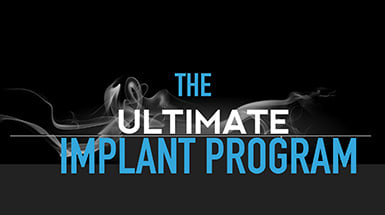Click here to view details of the hands-on session
What is it that you need to learn to be able to offer implants as a treatment modality to your patients?
A successful dental implant is all about providing a functional and esthetic restoration to the patient and every aspect that is associated with it for its long-term service. THE ULTIMATE IMPLANT COURSE intends to do just that!!!
Course objective: To provide holistic knowledge to clinicians, excel in scientific skill development and provide the confidence for delivering optimum results in dental implant practice.
This is the most comprehensive online dental implant course with certification. Practically covering
- Different types of dental implants – Providing insights to different implant systems, their design, advantage and limitations of use
- The Dental implant procedure – Surgical and prosthetic procedures shown through clinical video recording of live surgeries
- Managing a dental practice- How much should a dental implant cost to your patients? What is your commitment after this dental treatment?
- Which implant system to purchase- That is an easy decision after you understand the science behind the procedure and are introduced to multiple implant systems.
23 prerecorded sessions cover the following aspects
- Patient-related factors
- science and biology of related tissues
- technology advancements in implants
- interaction between this live tissue and a machine fabricated implant surface
- Asepsis and setting up the entire internal team for the procedure
- actual surgical setup, armamentarium and protocol - from incision to suturing
- prosthetic options of tooth replacement -stage 2 from impression to cementation
- the dynamic nature of occlusion and its nuance
- maintenance and recall for ensuring good service and
- knowledge to avoid and address complications if they arise
- implant practice management
Each concept will be explained with its clinical relevance for practical purposes. These theoretical lectures will be supplemented by videos showcasing clinical work for easy understanding
For course fee payment options, contact us at 8090380901 or write to us @ support@top-doc.com
International students can write to us at support@top-doc.com to sign up.

 subscription
subscription  Language - English
Language - English  Certificate of Completion
Certificate of Completion  Duration 33hrs 59min
Duration 33hrs 59min 